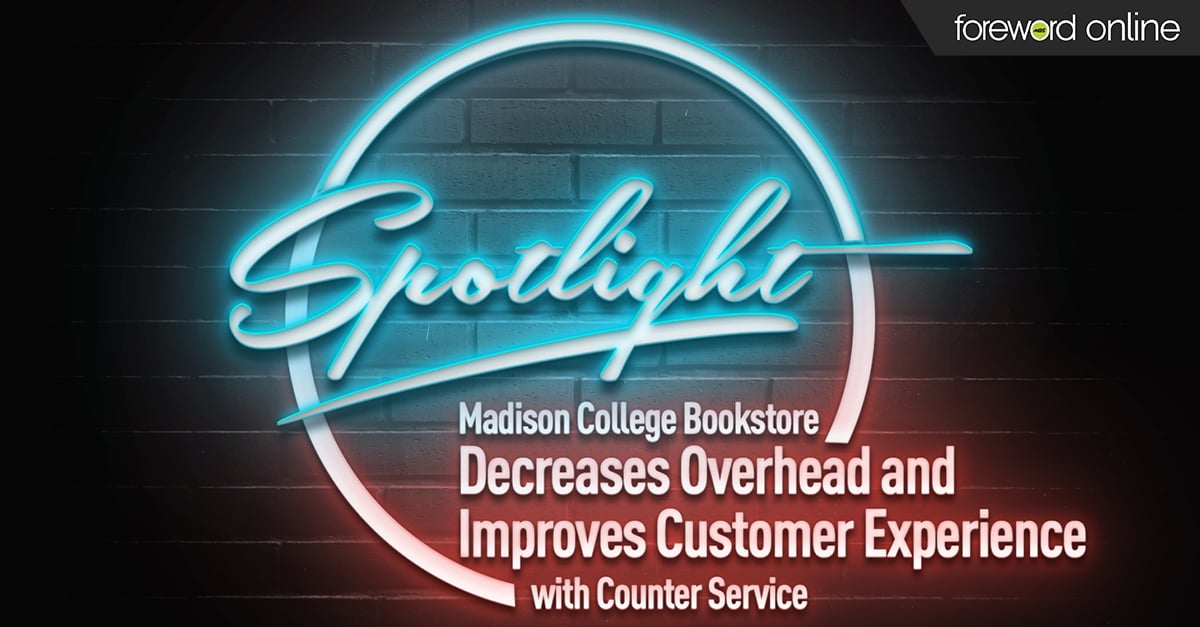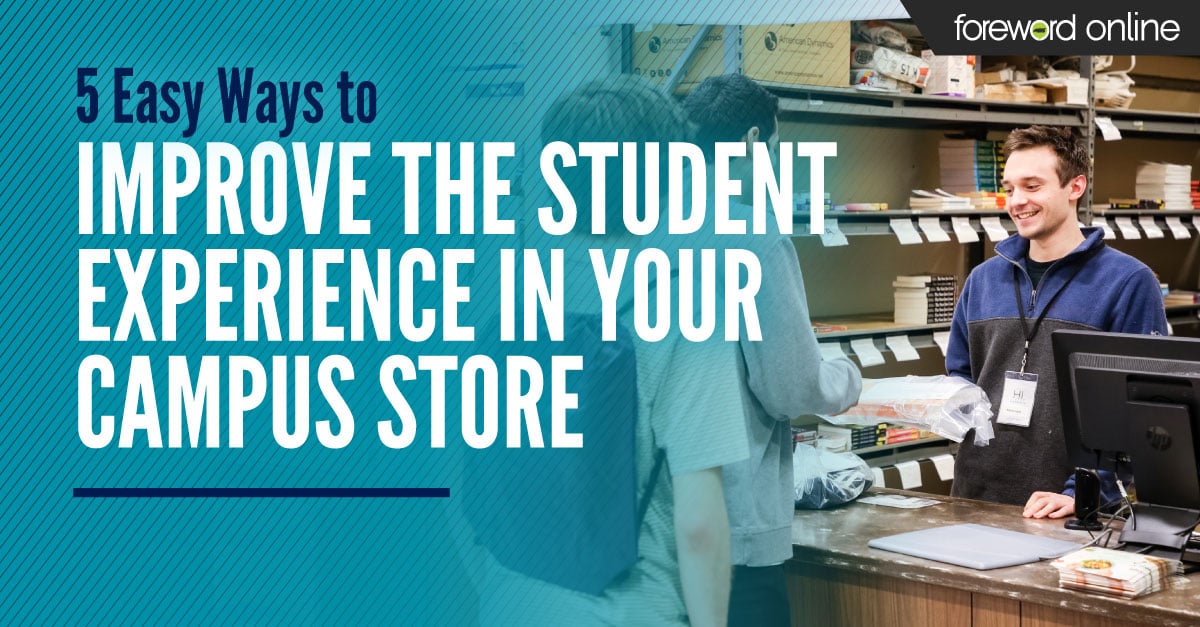Collegiate retailers are asked to lower student costs, increase school revenue and decrease overhead expenses all while providing students with a great customer experience. Creative solutions and retail innovations have helped many college stores meet these demands.
 The Madison College Bookstore improved efficiency, decreased overhead expenses and enhanced the student customer experience by switching to counter service three years ago. Recently, we sat down with the Madison College Bookstore Manager Scott Heiman to discuss how counter service works in his store and what advice he would give another store thinking about switching.
The Madison College Bookstore improved efficiency, decreased overhead expenses and enhanced the student customer experience by switching to counter service three years ago. Recently, we sat down with the Madison College Bookstore Manager Scott Heiman to discuss how counter service works in his store and what advice he would give another store thinking about switching.
How has textbook distribution changed in your store?
Before we switched to counter service, we noticed that during the rush periods store employees would have students following them through the stacks in a single-file line, waiting for their turn to be helped. Sometimes there were as many as 10 students in line, just following our staff up and down the aisles as they were helping another person. Students were just overwhelmed by the number of people in the aisles, how many books were on the shelves and having to decipher the course numbers on the shelf tags. Students would come to us to ask for help, but so many people were in the aisles that we couldn’t even access shelves.
So, we looked at ways we could improve this experience. We spoke to and visited some other stores and started looking into counter service as a solution.
Now, all our textbooks are behind the counter and nonrequired items are on the retail floor. Students come to the counter and give us their student ID. We pull up their courses and booklist, then we quickly explain new versus used books and optional versus required books. We always ask if they prefer new or used before we go to the shelf because we don’t want to bring a new and used copy. Sometimes, students have a class where there is a choice. For example, they may have to choose between five different novels. In that case, we talk to them first to see which one they would prefer.
After that, we pull their books and the students go to the cash register, which is right there at the same counter. We ring up the purchase, and they are on their way.
Behind the counter, we have a couple different workstations set up where staff can print a copy of the student’s schedule and courses, or they can use iPads if they prefer to do it electronically. We have found that our seasonal staff’s comfort level with technology varies. Some love the iPad and some just want to use the computer, so the store accommodates both.
What prompted you to switch to this method?
In addition to improving the student and staff experience, another part of it was space. We saw that we could utilize our space better and more efficiently. And, the other part was theft. Stuff seemed to be leaving the premises in an uncontrolled manner.
How have students responded to counter service?
Very well. I would say fewer than five people who have complained. Some students want to look through the used books and pick their book out. Our answer to that is, “Sure. We will grab a whole stack of them.” Then the student stands at the counter and selects whichever used book they want, and we put the rest back. It is really a limited number of people who want to do that, so it doesn’t really delay us. Overall, the students have been very happy.
The first couple days of the semester, I like to spend time in the front as a store greeter. I ask people how long they had to stand in line and how everything worked for them and whether they got what they needed. The feedback I get from the majority of people is that everything worked great. They say things like, “It is so much faster than I thought it would be,” or “I got what I needed and didn’t have to look for it. All they wanted was my ID.” So, most of the people are very happy about it.
There are obviously going to be some who take one look at the line and say, “I’m not going to stand in that line.” But, I don’t care if you are doing counter service or self-service, those people will have that same point of view when they see any line.
How has counter service benefited the store?
My staff like it better. It is easier to help the customer. They can focus all of their attention on one customer at a time instead of fielding several questions anytime they walk down an aisle. Not that we blame the students for asking, but it was unorganized chaos. Now, they are much happier.
It’s more efficient because staff can get up and down the aisles and pull orders faster. Another piece that was a huge win was improving our ability to pull web orders. All our books are stacked on the same shelves. So before, our staff was trying to pull web orders with all the students looking for their books. They would have to try to push their cart down aisles where you could barely walk. To fill one web order would take an hour because they had to help 14 people find their books.
So now, those staff members can pull those web orders and get those shipped out in so much less time. We used to panic when we got 100 web orders in a day because we didn’t know if we could get them out by 3 p.m. for UPS. Now, we can get 400 orders in the morning, and before noon, we have them done and ready to go. That’s a huge bonus that we really didn’t think a lot about in advance.
The one number that always sticks out in my memory from the first semester we did counter service is our returns decreased 13 percent compared to prior semesters. More students got the correct book. In the old way, they were coming in, unsure what to do. Sometimes, they had the right shelf tag but took the book from below the tag instead of above the tag. Decreasing our returns by 13 percent through the rush period was a pretty big number. Our inventory variance went down, too. I don’t remember exactly what it was before, but now I know we are under 1 percent variance when we do inventory. We were at least 5 to 7 percent before, and it could have even been worse. That’s a lot of money when you start looking at your inventory.
Another benefit to the store was it slightly decreased our staffing needs. A lot of people when I first started talking about doing this were worried we would have to hire more staff and it would cost more. We were actually able to go down a little bit. Like, if we brought in 25 seasonal workers before, now we bring in 23. So, it is a very small number, but it is definitely a lot different than increasing. Our overtime hours for full-time staff went down, too. When you can decrease your seasonal and your overtime hours while still improving service, that’s a win-win.
What advice would you give other stores interested in implementing counter service?
I think the best thing to do is get input from other stores that are doing it. When we did it, we spoke with stores that have switched to counter service and stores that have always done it. My advice would be to contact and really work with some of both. The ones that have always done it have it down and know how to run counter service in a really efficient way, but ones that switched in the last few years are able to say, “We know this worked for these stores, but for us, it didn’t work, so we did it this way.”
I think getting that feedback and learning what others are currently doing and what they have done is probably the best advice I can give. There’s more to it than just switching. If you can physically go to a store that does it, you can learn from that, too. The logistics, the layout and where the students are coming from, all make a difference in how you will set it up. There’s not one right answer.





